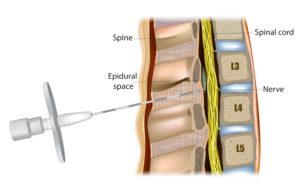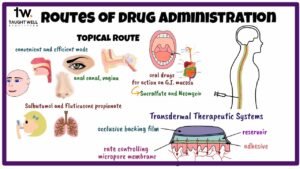Natural Remedies for Spider Bites
Natural Remedies for Spider Bites: Safe and Effective Solutions
Read Time: 8 mins
Effective Natural Treatments for Spider Bites
Spider bites can cause discomfort, but many non-toxic solutions can provide relief from symptoms like pain, redness, and swelling. These home remedies can help with common spider bites that aren’t venomous, such as the bite of an orb weaver or a jumping spider. However, it’s essential to monitor symptoms closely, especially if you suspect the bite could be from a venomous spider, such as a black widow or brown recluse. In such cases, immediate medical attention is crucial as untreated bites from these spiders can be life-threatening.
How to Handle Common Spider Bites
Most spider bites cause symptoms similar to a bee sting, including pain, redness, and inflammation. These bites generally don’t lead to severe reactions and can be treated at home using simple remedies. Non-venomous spider bites include those from:
-
Orb Weaver Spiders
-
Jumping Spiders
-
Tarantulas
-
Camel Spiders
For treating non-venomous spider bites, follow these steps:
-
Clean the bite area with soap and water, including the surrounding skin.
-
Apply an antibiotic ointment like Neosporin to reduce the risk of infection.
-
Use a cold compress or ice pack to soothe pain and swelling.
-
If the bite is itchy or painful, consider over-the-counter pain relievers.
-
Antihistamines, such as Benadryl (diphenhydramine), can help alleviate itching and inflammation.
-
Natural remedies like tea tree oil, aloe vera, or a baking soda paste may also be effective.
When to Seek Medical Attention
If symptoms persist or worsen despite home treatments, or if you develop any of the following, seek medical attention immediately:
-
Increased pain or swelling
-
Warmth around the bite
-
A bullseye-like pattern at the site of the bite
-
Pus or drainage from the wound
-
Fever, chills, or nausea
-
Muscle aches or weakness
-
Difficulty breathing
Always be vigilant for signs of infection or allergic reactions, which may require medical intervention.
Managing Venomous Spider Bites
In the U.S., the most common venomous spiders include the brown recluse and black widow. These spiders usually bite when they feel threatened or trapped. If bitten by a venomous spider, take the following steps:
-
Clean the bite area thoroughly.
-
Apply ice to slow the absorption of venom.
-
Keep the affected area elevated and stay as still as possible.
-
Seek immediate medical care. A healthcare professional will assess the bite and decide on further treatment.
How to Identify Venomous Spider Bites
Spider bites are often hard to identify because you may not see the spider itself. Common symptoms of a venomous bite include:
-
Difficulty breathing
-
Severe muscle pain or cramping
-
Dizziness, confusion, or fainting
-
Palpitations or irregular heartbeat
-
Visual disturbances
-
Severe headaches
-
Yellowish discharge from the bite area
-
Nausea and vomiting
Brown Recluse Spider: Key Characteristics and Treatment
The brown recluse spider is named for the violin-shaped marking on its back. It’s typically found in the Midwest and South of the U.S. Brown recluse spiders are about 1 inch in length and have six eyes (unlike most spiders, which have eight). They typically bite only when disturbed. Brown recluse bites often begin with a mild sting, followed by intense pain and a small blister at the bite site.
Symptoms of a Brown Recluse Bite:
-
Pain or tenderness at the bite site
-
Fever, chills, and nausea
-
Weakness and joint pain
-
Skin necrosis, which requires immediate medical attention
If bitten by a brown recluse, seek medical treatment promptly. Topical treatments may include antibiotic ointments or antihistamines, but severe cases may require prescription medication or even hospitalization. Avoid using alcohol or hydrogen peroxide on the wound, as these can worsen the condition.
Black Widow Spider: Identifying and Treating Bites
Black widow spiders are black with a distinctive red hourglass shape on their underside. They are most commonly found in the U.S. South and West but can also be found in other parts of North America. These spiders prefer to hide in undisturbed areas, such as woodpiles and sheds. Black widow spiders typically bite when disturbed.
Symptoms of a Black Widow Bite:
-
Intense pain at the bite site, radiating outward
-
Muscle stiffness and cramping
-
Sweating and nausea
-
Restlessness and dizziness
-
Difficulty breathing and increased heart rate
-
Elevated blood pressure and fever
Given that the black widow’s venom is a neurotoxin, it’s crucial to seek medical attention immediately if bitten.
Spider Bite Identification: How to Differentiate Venomous from Non-Venomous Bites
While it’s not always easy to identify the specific type of spider that has bitten you, understanding key characteristics can help. Here’s how to tell the difference:
Brown Recluse Spider:
-
Size: 0.25–0.75 inches long
-
Color: Golden-brown with a violin-shaped marking
-
Eyes: Six eyes arranged in pairs
-
Habitat: Typically found in dry, secluded areas like attics or under rocks
Black Widow Spider:
-
Size: Around 1.5 inches, including leg span
-
Color: Black with a red hourglass shape on the underside
-
Eyes: Eight eyes
-
Habitat: Found in undisturbed areas like woodpiles and basements
Prevention Tips: How to Avoid Spider Bites
To reduce the risk of spider bites, consider these prevention tips:
-
Use insect repellent and wear long sleeves and pants when outdoors.
-
Keep firewood and rock piles away from your home or garage.
-
Seal gaps around windows and doors to prevent spiders from entering your home.
-
Shake out clothing and bedding before use, especially if you’ve been in areas prone to spiders, such as attics or basements.
Key Takeaways
While most spider bites can be treated at home, it’s important to recognize the symptoms of a venomous bite. Always seek medical attention if symptoms worsen or if you experience signs of an allergic reaction. By following preventive measures, you can significantly reduce the likelihood of encountering dangerous spiders.
Expert Tips
-
Keep your home clean and free of clutter to reduce spider habitats.
-
If you live in an area prone to venomous spiders, take extra precautions when working outdoors or in secluded spaces.
Frequently Asked Questions
-
Can I treat a spider bite with home remedies? Yes, most non-venomous spider bites can be treated with home remedies like ice, antihistamines, and antibiotic ointments.
-
How can I prevent spider bites? Use insect repellent, wear protective clothing, and keep your living spaces free of spider habitats.
-
When should I seek medical attention for a spider bite? If you experience severe symptoms like difficulty breathing, muscle pain, or fever, seek immediate medical care.









